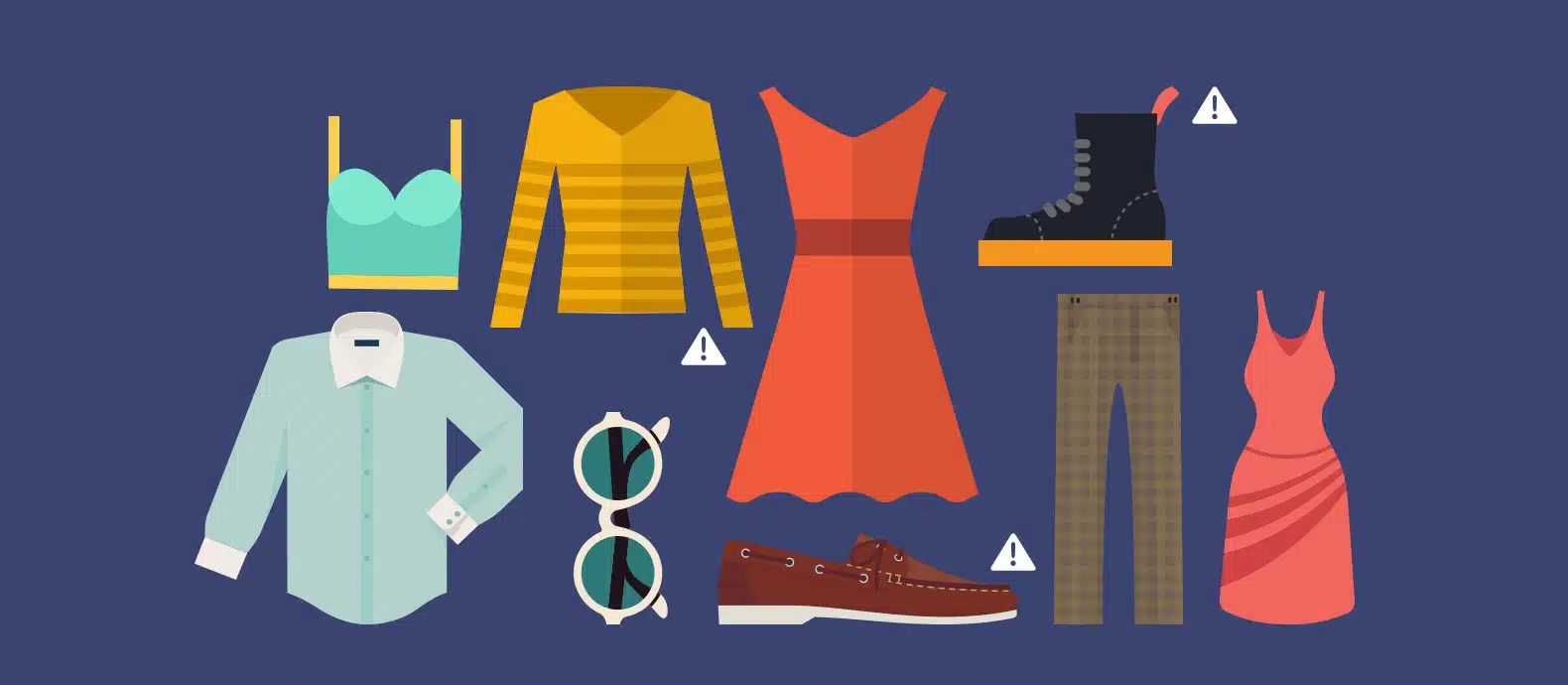Has your brand received negative feedback from customers duped into buying fakes from counterfeit sellers?
Unfortunately, our recent study shows that only a fraction of consumers who buy fakes report anything to the brand. Many will simply stop purchasing your products, and others will take to social media to voice their dissatisfaction.
In April of 2025, we surveyed 2,000 people who had purchased a fake either intentionally or unintentionally (some even did both) as part of our Counterfeit Buyer Teardown report.
Below, we’ll focus on why consumers buy counterfeits and the trust issues brands deal with as a result. Read on to learn more about who is buying fakes and what you can do to reduce damage and churn.
Why consumers buy counterfeit products: Intent matters
Our survey revealed that 46% bought fakes unintentionally and 39% bought them intentionally. It makes sense that many people bought fakes unintentionally, because fakes are sold to dupe buyers into thinking they’re real. But it’s alarming to see the percentage that bought them on purpose. This shows a large portion of consumers seek out fakes to save money and get the look without the price tag.
There’s a third group too: 15% of respondents intentionally and unintentionally bought fakes. These buyers were savvy enough to find deals on the fakes they wanted. But at other times, they bought counterfeits by accident.
Fakes fulfil similar needs in intentional and unintentional shoppers, but for different reasons. Both groups are price sensitive, but sale prices lure unintentional buyers without realizing the product is a fake. They can blame your brand after unintentionally buying a counterfeit. We found that almost one in three stopped buying from the brand after buying a fake by accident.
Intentional shoppers, on the other hand, are more accepting of issues with quality or customer service from fake sellers. These shoppers aren’t loyal to your brand—they can swing either way depending on the offer. They look for deals primarily, but many respondents follow influencer trends and don’t care about authenticity. About 45% of intentional shoppers would stop if the brand’s products were cheaper.
Trust signals influencing accidental counterfeit purchasing
You might think counterfeit listings and fake sites are easy to spot, but that’s not what we found. About 58% of accidental buyers said they were misled by websites that looked professional. These sites had the right photos, product descriptions, and design to appear legitimate.
About half (51%) said they were also drawn in by reasonable pricing. Our internal data shows counterfeits are usually discounted by 31% to 38% compared to the retail price. These discounts aren’t high enough to raise red flags for many shoppers. Finally, 39% of respondents said sites advertised secure payment methods like PayPal or major credit cards, which boosted trust.
The rise of AI adds another complication. It’s easier than ever for fake sellers to create well-designed websites complete with images, descriptions, and reviews. Scammers can use tools from companies like OpenAI and MidJourney to create realistic sites in hours. Fake sites will become harder to spot with AI’s increasing quality.
The psychology of intentional counterfeit shoppers
Not all shoppers fall victim to fakes. Some seek them out. Looking at this demographic, we found that saving money is the top reason why 55% of intentional shoppers buy fakes. Another 40% said fakes looked identical. In other words, they can’t tell enough of a difference to make buying the real thing worth it.
We also found that 31% of intentional shoppers were influenced by social media to purchase fakes, including by influencers. Millennials (34%) and Gen X (30%) are the most likely to follow influencer recommendations.
This data parallels Trustpilot’s Viral Shopping Trends survey, which showed 55% of Gen Z and Millennials discovered fakes through social media. TikTok was the leading platform (50%), followed by Facebook (48%) and Instagram (42%).
Brands aren’t just dealing with fake sellers. They have to contend with trending hashtags and popular influencers that point shoppers in the direction of fakes.
What risks do counterfeits pose for brands?
Counterfeits pose risks to brands on many levels. Even if you provide great service through authorized channels, one in three customers who get a fake by accident (from somewhere else) will stop buying from your brand. We’ve seen this issue for many years. While you aren’t responsible for the counterfeit existing, customers can blame your brand anyway.
Our survey also showed that millennials are vocal when it comes to buying fakes by accident. About 43% share their negative experiences online, and they’re the group most likely to do so. This multiplies the damage counterfeits can have on your reputation.
Finally, some categories of consumer goods are hit harder than others. We found that luxury items, toys, and personal care products are the most exposed. These types of products tend to draw attention on social media, too.
What can brands do to stay ahead?
By the time your customers start complaining about fakes, it’s too late. Only 30% of unintentional buyers reported fakes to the brand, anyway. Without proactive detection, you have to play a game of whack-a-mole, stopping fakes manually and devoting significant time. Counterfeiters will simply change their strategy, and you won’t get to the root of the problem.
So, how do you get ahead? By using a systematic approach to detection. Proactively monitor marketplaces, social media, and standalone websites wherever your brand could appear (not just the platforms you use). This is the only way to uncover fakes when they surface and take them down before they do significant damage.
How Red Points helps boost loyalty
Instead of playing whack-a-mole, you can leverage Red Points’ AI-powered brand protection platform to stop fakes at the source. Our AI models identify infringements based on the world’s largest brand protection data set. The platform adapts to your brand to detect lookalikes and scams in websites, images, social media posts, marketplaces, and more.
Unlimited takedowns let you enforce your IP rights at scale. This gives you an edge, since counterfeiters often set up multiple sites and channels targeting one type of product. In the dashboard, you can see counterfeit risk areas and track how takedowns impact brand loyalty. By removing counterfeits early, you can retain those customers who would otherwise leave your brand after encountering a fake.
What’s next: Turn insights into action
Our counterfeit consumer behavior survey shows fakes present multifaceted issues for brands. People buy them both on purpose and by accident, and they can cause loyal customers to turn the other way or voice their negative experiences online.
That said, with the right tools, you can shift your strategy from reactive defense to proactive protection. Gain the upper hand with real-time monitoring, AI counterfeit detection, and unlimited automated takedowns. Get started with a quick demo today to see how Red Points can help you retain customers and improve loyalty.








